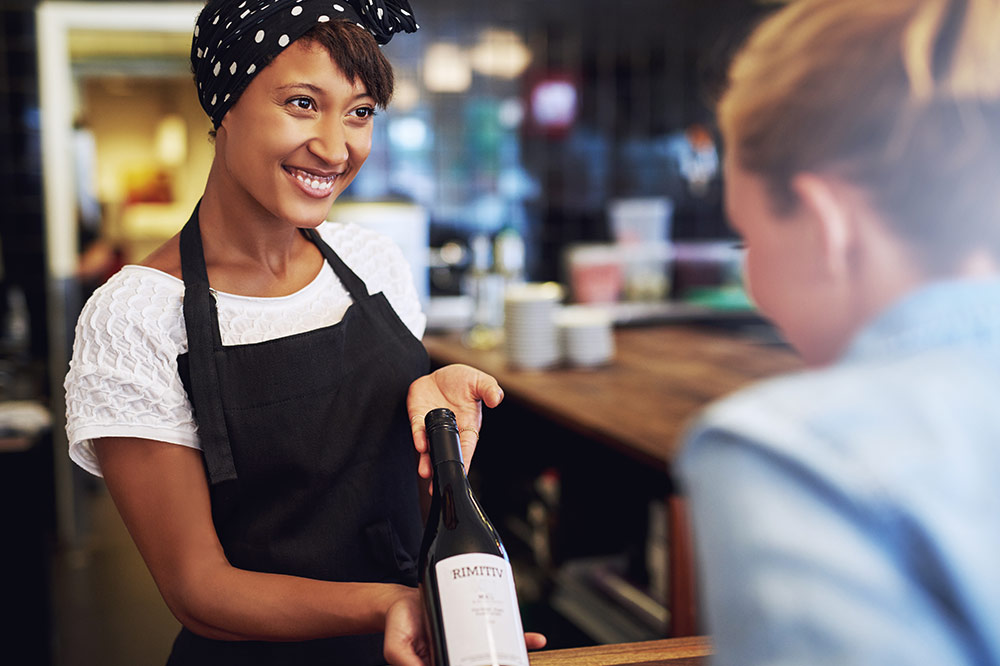Facing challenges that are similar to the culinary world, the number of women in the wine industry lags behind their male counterparts. As an integral part of the hospitality industry, sommelier and beverage director positions can require long hours to cover new vintages and trends in beverages coming out every year. These jobs may also require working evenings and weekends, which can disproportionately affect women wine professionals juggling both career and family responsibilities.
But with women across multiple professions managing these challenges, not to mention the rising influence of women wine consumers, why don’t we don’t see more women wine professionals influencing what we’re drinking?
Outdated perceptions about wine, including who drinks it and who sells it, may be skewing the field toward men but this view might not last much longer. If market and consumer trends are any indication, the wine industry is headed for a significant image make-over.
The Changing Faces of Wine
There certainly isn’t any doubt that women wine professionals are as capable as their male counterparts. But even though the numbers of women working in wine are increasing, antiquated perceptions of who is (or should be) your sommelier or beverage director still persist, both among employers and customers. More often than not, that perception is still of a man, probably white, catering to other men with big expense accounts.
The lingering assumption that there’s always a man behind the wine list is not only outdated, it also doesn’t represent the majority of customers actually drinking wine. Research from the Wine Market Council indicates that women comprise 57% of wine drinkers in the U.S., and a stunning 83% of total wine purchases.
Women are also driving demand for different varieties of wine, led in part by millennials, who already account for 36% of wine drinkers. Millennials have more adventurous palates, and drink wines from not just from California, but also from Oregon, Washington, and New York. They are also more likely to try bottles from lesser known areas, such as Greece, South Africa, and South America.
This more open approach indicates that millennials are also less likely to hang on to old stereotypes about wine, including who best represents the industry or who should be drinking what.
More than a Matter of Taste
Certainly, the wine industry is not the first male-dominated profession with women as the primary consumers. The fashion industry is full of men who are lauded for their women’s designs. But consider, for a moment, how the industry might look with more women wine professionals front and center.
A change in attitude and approach toward customers might be one difference. While undoubtedly extremely qualified, women will more often emphasize dialogue with the customer, rather than highlight their credentials as a wine authority. There may be more listening to customer preferences and goals for the meal, and more back-and-forth discussion on wine choices. By contrast men, who also take into account customer preferences, are more likely to demonstrate their vast knowledge and tell the customer directly what to drink.
Differences in how men and women view and taste wine could also influence customer recommendations. Men more often gravitate toward big names and flavors, matching preferences for strong flavor profiles. Women, on the other hand, are thought to have more sensitive palettes than men and the ability to recall what they’ve tasted much faster. This could lead to a more nuanced understanding of wine and ultimately, more finely tailored recommendations and higher customer satisfaction.

How Restaurants Can Support Women in Wine
First and foremost, publicly support women wine professionals, especially if they work in your restaurant! This might seem obvious but when facing inappropriate or critical comments from a customer (“Can I speak to the wine guy?”), the authority of female employees can be undercut by deferring to the customer. If you have a professional, competent woman in the job (and we’re guessing you do!), make it clear to your customers and staff that she is there do her job, and will do it well.
Foster mentorship for women who are interested in wine. Networks for women in the industry are stronger, and a growing number of women are seeking out leadership roles in the industry, both as managers and owners. Encourage women to meet with these professionals on a regular basis.
Likewise, encourage continuing professional development, such as sponsoring wine certification courses or arranging special staff tastings, to broaden knowledge and deepen skill sets. These opportunities should go beyond wine, to include the business foundations of the industry.
Supportive actions like these signal to women entering the industry that they have a viable career path, combining not just in-depth knowledge and tasting skills, but also business and customer savviness. The more support women receive from other industry professionals, the more likely we’ll see women not only as an integral part of the wine industry, but also as leaders and changemakers.






